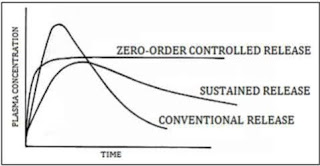Aqueous Acid Base Titration
Titration (titrimetric and volumetric analysis) is a quantitative chemical analysis method that determines the density of an unknown solution by the concentration of a known solution.
It is basically the process of determining the unknown concentration of a solution.
A known concentration solution is required for titration and this known concentration solution is called a standard solution.
Equivalence point: Equivalence point is the point at which the titration and concentration of the sample solution are equal is called the equivalence point.
When an acid reacts with a base, the ions from the acid and the ions from the base combine to form water.
H+ + OH- → H2O
This is the neutralization reaction.
Salt is the substance that produces other than water by reacting with acids and bases.
Example :
HCl + NaOH → H2O + NaCl
(Acid) (alkali) (water) (salt)
Acid by reacting an unknown concentration of acid solution with a known concentration of alkali solution.The concentration of the solution can be determined.
Similarly, the concentration of an alkali solution can be determined by reacting a known concentration of acid solution with an unknown concentration of basic solution.
This method is called titration.
Pipette for titration A specific volume of an acid or alkali solution (e.g., 10)
Ml) is taken in a conical flask and slowly added from one burrit to another solution.
To determine the end point of the reaction, two or three drops of indicative solution are first added to the solution of the conical flask. At the last point the indicator changes its color to indicate the end of the neutralization reaction.
Equation of the neutralization reaction between acid A and base B
xA + yB → → Salt + water
Principles of acid-base titration.
aA + bB = Product (Product = Salt + Water)
Here,
a = number of moles of acid
SA = concentration of acid
VA = volume of acid
b = number of moles of alkali
SB = concentration of alkali
VB = volume of base
Arrhenius Theory:
According to Areherius Theory, acid-base is defined as follows:
Acids: All compounds with hydrogen atoms that donate protons (H +) to aqueous solution are called acids.
Such as HCl, H2SO4, HNO3 etc.
HCl + H2O → H + (ag) + Cl- (ag)
Alkalis: Hydroxyl compounds that donate hydroxyl ions (OH-) to aqueous solutions are called bases.
Such as NaOH, KOH etc.
KOH + H2O → K + (ag) + OH- (ag)
The main flaw of this theory is that in the absence of water, the acidity of these substances cannot be explained.
According to this theory, in order to be a base, it is obligatory to leave the OH-ion in the solution, but in some cases we see an exception. For example, NH₃ is an alkali despite having no OH
According to this theory, H⁺ ions reside freely in aqueous solution. However, in aqueous solution, H⁺ ions are always hydrated to form hydronium ions.
H⁺ + H₂O ↔ H₃O ⁺ (aq)
According to this theory, an acid must contain hydrogen ion(H⁺ ion) and a base must contain a hydroxyl ion(OH⁻). But there are substances whose aqueous solutions are acidic or basic in nature without containing H⁺ or OH⁻ ions.
For example: FeCl₃, CuSO₄ , CO₂. Show acidity in the aqueous solution and NaNO₃ , NH₃. Shows basic nature in the aqueous solution.
FeCl₃ + 3H₂O ↔ Fe(OH)₃ + 3H₂O
Lewis's theory of acids and bases
According to Lewis's theory, the theory of acid-base is described below
Acids:
The compounds or ions that can receive one pair of electrons from another compound or ion are called acids. Such as: H +, AlCl3, etc.
H + +: NH3 → H +. . NH3
Acid
Usually:When a covalent bond is formed between a donor and a recipient in a compound, the recipient compound or ion is called acid. According to this theory, electron deficient compounds or positively charged ions are acidic.
Alkaline:
The compounds or ions that can donate a pair of electrons to another compound or ion are called bases.
Such as: NH3, Cl-, etc.
H + +: NH3 → H +. . NH3
Alkaline
Usually:Compounds with negatively charged compounds or lon pairs of electrons can donate a pair of electrons, so they are basic.
Bronsted Lowry Theory
Among the modern theories of acid and alkali, the Bronsted Lowry Theory directly explains the acid-base equilibrium.
According to this theory, the substances that donate protons are acids and the substances that receive protons are bases.
All these substances can be charged or uncharged.
That is, a solvent-neutral substance capable of donating or receiving protons is an acid or base.
Its intensity is determined by the level of proton donation or acceptance capacity.
This theory is also called protonic theory.
Example
The reaction of HCl and H2O also produces H3O in solution
In this reaction HCl is converted to Cl- by donating protons. So here is HCl acid as the proton donor.
Water again takes that proton and turns it into hydronium ion (H3O +).
Thus H2O is an alkali as it is able to recive protons. Again the H3O + ion leaves the proton in the opposite direction and accepts the Cl-ion proton.
So H3O + ions are acids and Cl- ions are bases. Thus the following equation indicates the relation of acid bases according to the Bronsted-Lowry theory.
HB = H + + B-
That is, in general, Acid = proton + base
Therefore, the main difference between acids and bases is only one proton.
Conjugate acid & base
According to the Bronsted-Lowry theory, the general equations of acid bases are as follows:
HB = H + + B-
According to this reaction HB is an acid because it donates protons. According to the opposite reaction, B is a base because it receives protons and converts them into HB. There is only one proton difference between these HB and B-substances. In such cases, the acid HB is the conjugate acid of the base B and the B-ion is the conjugate base of the same acid.
Therefore, it can be said that the base formed as a result of the release of a proton from an acid is called the conjugate base of that acid.
Again, the acid produced by the connection of a proton with a base is called the conjugate acid of that base.
So each acid is becoming a base by donating protons and each base is becoming another acid by accepting protons. Therefore, two acid bases are present in the solution in equilibrium.
These are called conjugate pairs.
Note that if the acid is strong, its conjugate base will be weak - and if the acid is weak, its conjugate base will be strong. Thus, if the base is strong then its conjugate acid will be weak and if the base is weak then its conjugate acid will be strong.



Comments
Post a Comment
Thanks